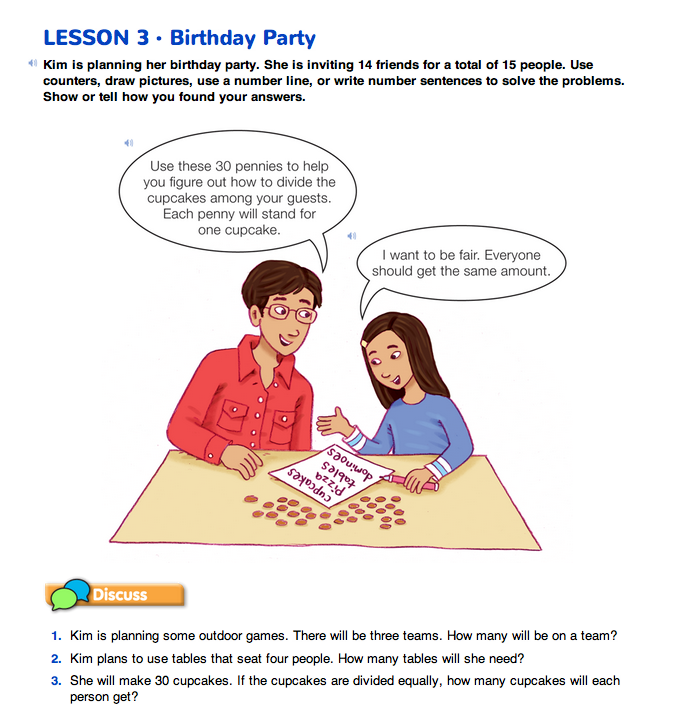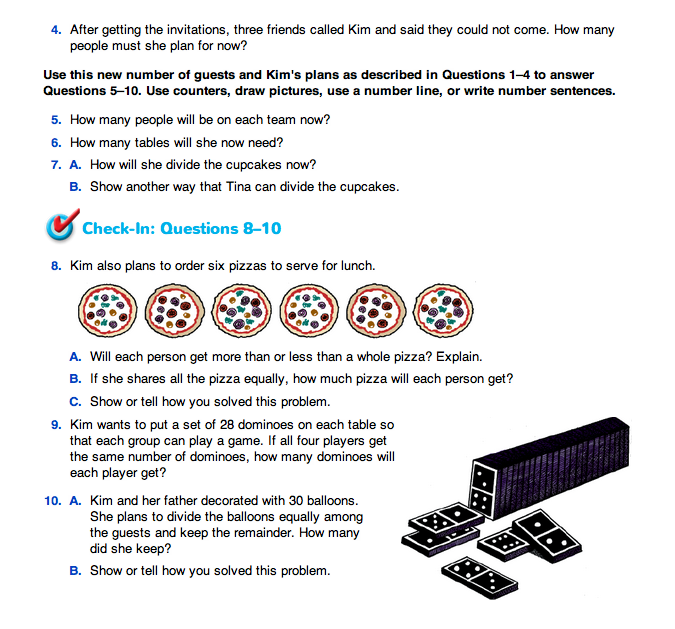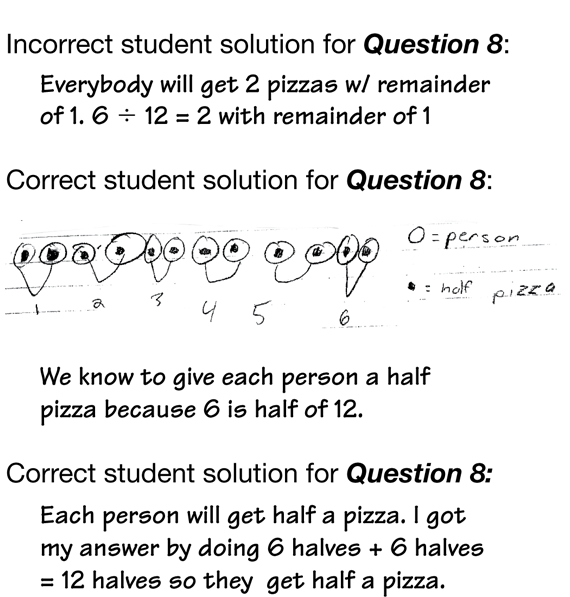Birthday Party
Est. Class Sessions: 2Developing the Lesson
Explore Strategies to Divide. Students work in pairs to solve problems on the Birthday Party pages in the Student Guide. Each of the problems focuses on how Kim will divide various items for her birthday party. Although the problems can be solved using division, students may use a variety of strategies to arrive at the answer. See Sample Dialog 1.
Give each pair about thirty counters. Encourage students to use them to solve Questions 1–3 and to provide explanations with words and pictures. If students answer the questions without the counters, ask them to check their solutions using the counters.
As students work, help them describe what they are doing by rephrasing the problem.
For example, Question 1 can be restated as:
Question 2 can be restated as:
After students have had time to work on Questions 1–3 use prompts similar to those in Sample Dialog 1 discussing Question 1 to help guide a class discussion about the strategies and number sentences students used to solve these problems.
In Question 2 students will need to decide how to use the remainder in their answers. Although 15 ÷ 4 = 3 with 3 left over, it is important that students understand what each of the numbers in this number sentence represents in order to interpret the remainder. A diagram or drawing may help students understand this problem more clearly. See Figure 1.
In this problem the 15 represents the number of people at the party, the 4 tells the number of people who can sit at each table. The first 3 tells the number of full tables you will need and the “leftover” 3 is the number of people who will not have a place to sit. Since it would be impolite for Tina to let three guests stand, she will have to add another table for her guests. The answer should be four tables.
Use Strategies to Divide. Ask students to continue to work with their partner to complete Questions 4–7. Remind students that they can use counters, drawings, number lines, and number sentences to solve each problem.
Question 7A asks students to decide how to share thirty cupcakes equally among the twelve people at the party. Each person can eat two whole cupcakes, but students must decide what to do with the six leftover cupcakes. They can choose to note that there will be six leftover cupcakes or they can divide each of the six cupcakes in half so each person will get 21/2 cupcakes. Either answer is appropriate. In Question 7B students are asked to find a second way to divide the cupcakes among the guests.
Ask students to complete Check-In: Questions 8–10. Students can continue to work with their partners or these questions can be completed independently.
Question 8 deals with fractions when it asks how much pizza each of twelve people can eat if they order six pizzas. Have students draw pictures to represent the problem as they did in Unit 3 Lesson 3 Multiplication Stories. See Figure 2 for sample correct and incorrect solutions.




















